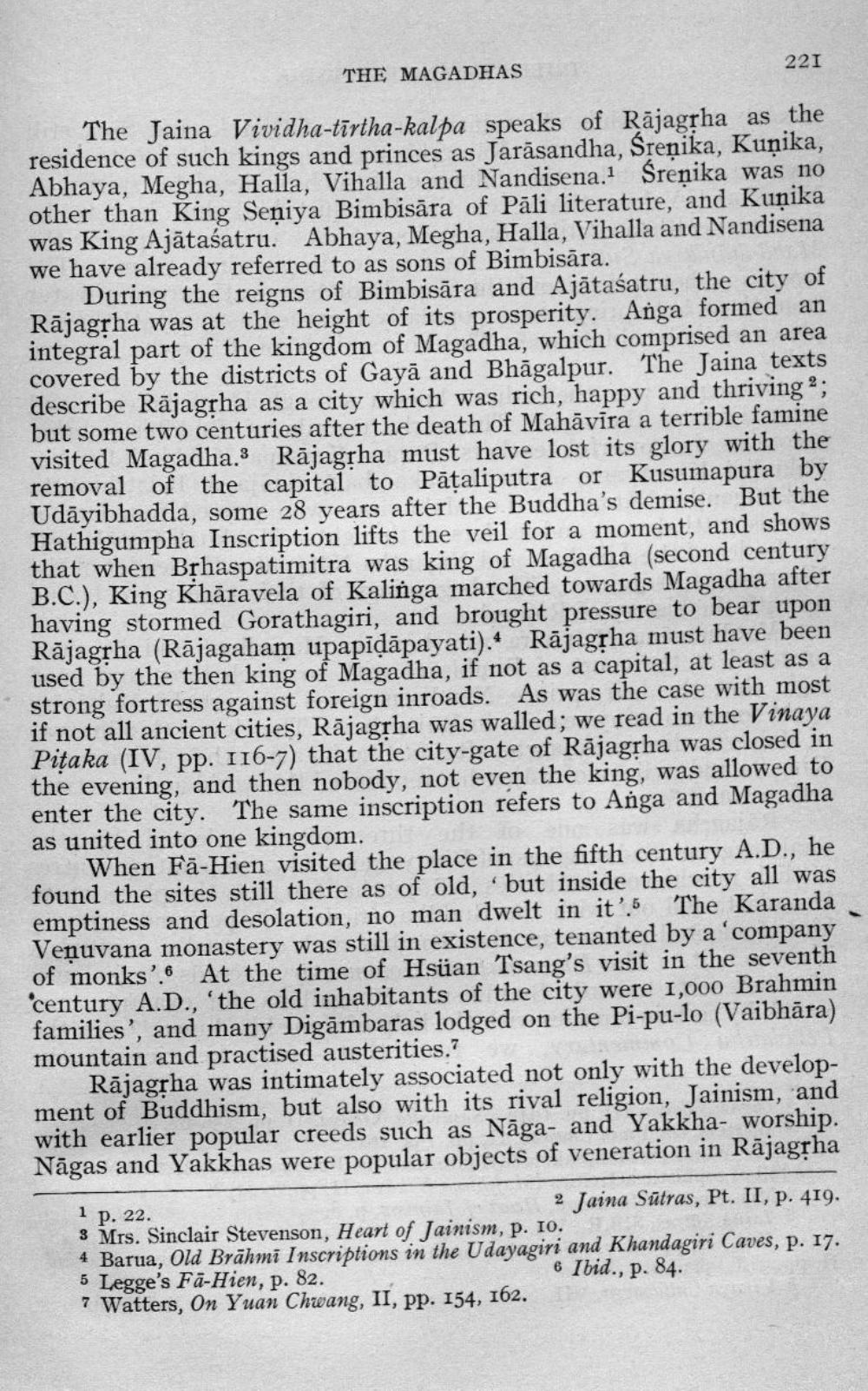________________
THE MAGADHAS
221
The Jaina Vividha-tīrtha-kalpa speaks of Rājagtha as the residence of such kings and princes as Jarāsandha, Sreņika, Kuņika, Abhaya, Megha, Halla, Vihalla and Nandisena.1 Śreņika was no other than King Seniya Bimbisāra of Pāli literature, and Kuņika was King Ajātaśatru. Abhaya, Megha, Halla, Vihalla and Nandisena we have already referred to as sons of Bimbisāra.
During the reigns of Bimbisāra and Ajātaśatru, the city of Rājagrha was at the height of its prosperity. Anga formed an integral part of the kingdom of Magadha, which comprised an area covered by the districts of Gayā and Bhāgalpur. The Jaina texts describe Rājagrha as a city which was rich, happy and thriving ?; but some two centuries after the death of Mahāvira a terrible famine visited Magadha.3 Rājagrha must have lost its glory with the removal of the capital to Pātaliputra or Kusumapura by Udāyibhadda, some 28 years after the Buddha's demise. But the Hathigumpha Inscription lifts the veil for a moment, and shows that when Brhaspatimitra was king of Magadha (second century B.C.), King Khāravela of Kalinga marched towards Magadha after having stormed Gorathagiri, and brought pressure to bear upon Rājagrha (Rājagaham upapīdāpayati).4 Rājagrha must have been used by the then king of Magadha, if not as a capital, at least as a strong fortress against foreign inroads. As was the case with most if not all ancient cities, Rājagrha was walled; we read in the Vinaya Pițaka (IV, pp. 116-7) that the city-gate of Rājagrha was closed in the evening, and then nobody, not even the king, was allowed to enter the city. The same inscription refers to Anga and Magadha as united into one kingdom.
When Fā-Hien visited the place in the fifth century A.D., he found the sites still there as of old, but inside the city all was emptiness and desolation, no man dwelt in it'5 The Karanda Veņuvana monastery was still in existence, tenanted by a 'company of monks'.6 At the time of Hsüan Tsang's visit in the seventh 'century A.D., 'the old inhabitants of the city were 1,000 Brahmin families', and many Digāmbaras lodged on the Pi-pu-lo (Vaibhāra) mountain and practised austerities.?
Rājagrha was intimately associated not only with the development of Buddhism, but also with its rival religion, Jainism, and with earlier popular creeds such as Nāga- and Yakkha- worship. Nāgas and Yakkhas were popular objects of veneration in Rājagļha 1 p. 22.
2 Jaina Sūtras, Pt. II, p. 419. 3 Mrs. Sinclair Stevenson, Heart of Jainism, p. 10. 4 Barua, Old Brāhmi Inscriptions in the Udayagiri and Khandagiri Caves, p. 17. 5 Legge's Fä-Hien, p. 82.
• 6 Ibid., p. 84. 7 Watters, On Yuan Chwang, II, pp. 154, 162.




